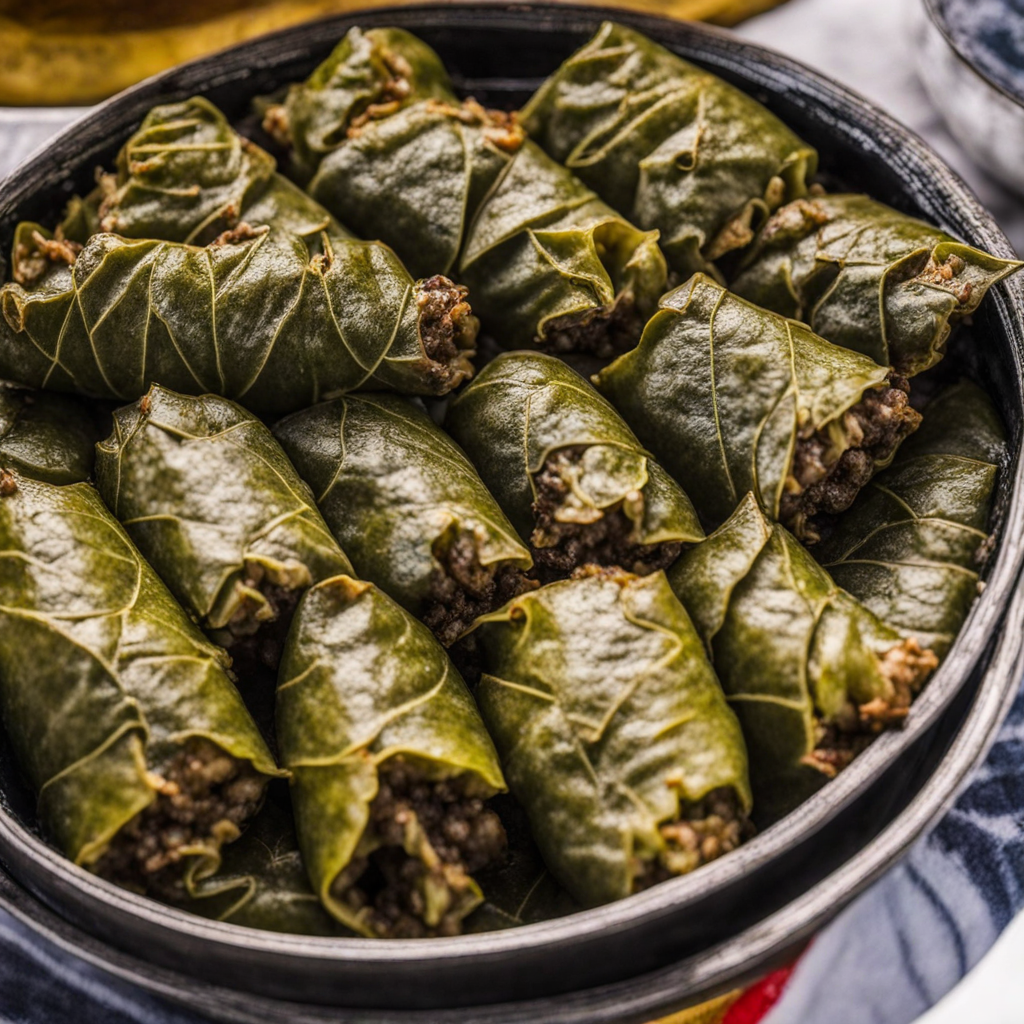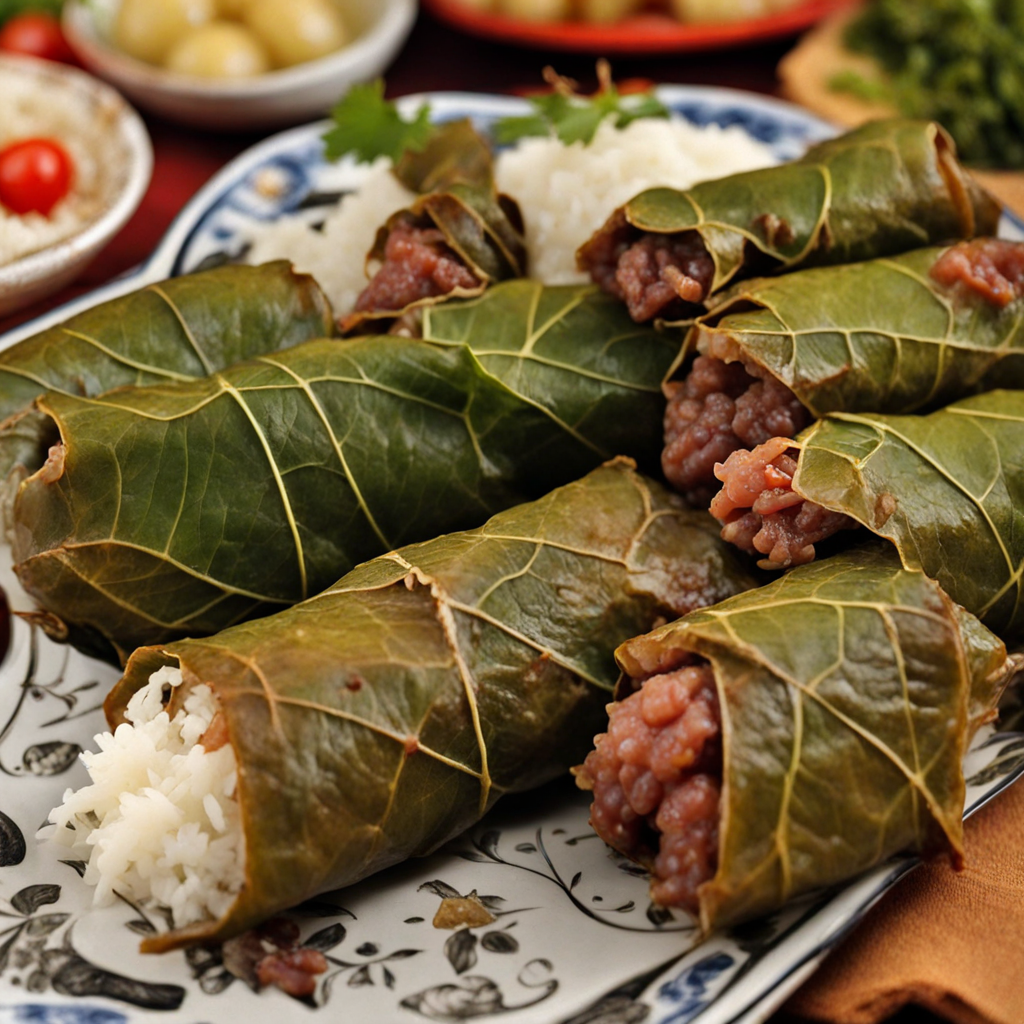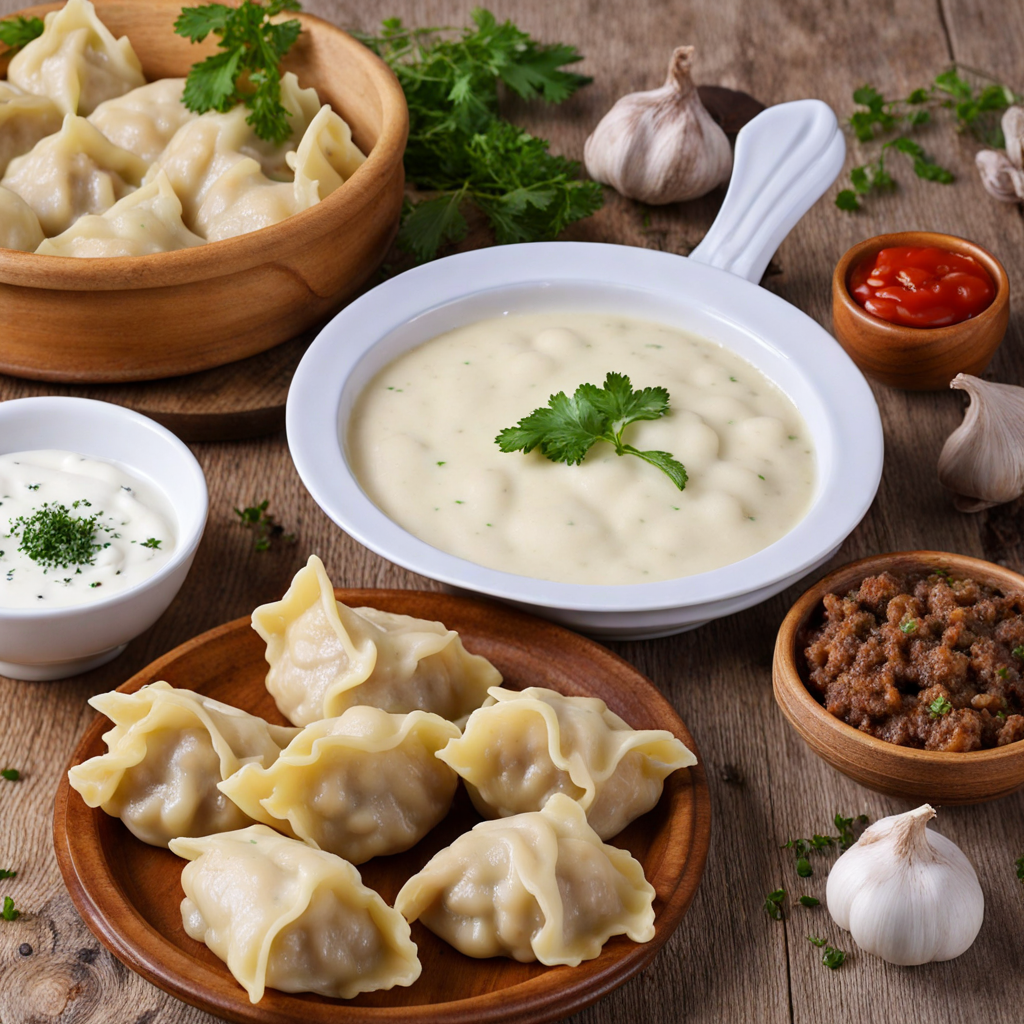Japrak
Japrak is a traditional dish from Bosnia and Herzegovina that beautifully showcases the region's rich culinary heritage. This flavorful meal consists of grape leaves stuffed with a savory mixture of minced meat, rice, and aromatic herbs and spices. The leaves, usually young and tender, are carefully blanched to soften them, making them pliable and easy to roll. The stuffing is seasoned with a blend of spices that may include paprika, salt, and pepper, creating a harmonious balance of flavors that tantalize the palate. Once rolled, the stuffed grape leaves are arranged in a pot, often layered with additional grape leaves or slices of tomato to prevent them from sticking to the bottom. They are then simmered slowly in a savory broth, which allows the flavors to meld beautifully and the rice to cook to perfection. As they cook, the grape leaves impart a subtle tanginess, while the meat and rice absorb the aromatic broth, resulting in a dish that is both comforting and satisfying. Japrak is typically served warm, often accompanied by a dollop of creamy yogurt or a drizzle of olive oil, enhancing its flavor profile. It is a dish that embodies the essence of Bosnian cuisine, inviting diners to appreciate the simplicity and depth of home-cooked meals. Whether enjoyed at family gatherings or festive occasions, Japrak offers a unique taste experience that reflects the cultural richness of Bosnia and Herzegovina.
How It Became This Dish
The History of Јапрак: A Culinary Treasure of Bosnia and Herzegovina Origins and Ingredients Јапрак, known as "grape leaves stuffed with rice and meat," is a beloved dish that embodies the rich culinary heritage of Bosnia and Herzegovina. The name itself, Јапрак, derives from the Turkish word “yaprak,” meaning “leaf,” a nod to the dish’s primary ingredient. The origins of Јапрак can be traced back to the Ottoman Empire, which spanned across the Balkans for centuries, introducing various culinary practices that would shape the region's gastronomy. Initially, the dish was created as a means of utilizing local ingredients, particularly the grape leaves that thrived in the Mediterranean climate of the region. In Bosnia and Herzegovina, grapevines are abundant, and the tender leaves have long been a staple in the local diet. The dish typically consists of grape leaves filled with a mixture of rice, minced meat (often beef or lamb), and a medley of spices, including salt, pepper, and sometimes a hint of paprika or dill. The use of rice signifies an adaptation to local agriculture, as rice cultivation became more prevalent during the Ottoman period. Cultural Significance The preparation and consumption of Јапрак extends beyond mere sustenance; it is interwoven into the social and cultural fabric of Bosnian life. Traditionally, Јапрак is a dish that brings families and communities together. Its preparation often involves multiple generations working side by side, fostering a sense of togetherness and passing down culinary skills from mothers to daughters. The act of rolling the grape leaves is often seen as a communal activity, where laughter and stories are shared, creating lasting memories and reinforcing familial bonds. Moreover, Јапрак holds a special place in Bosnian celebrations and religious observances. It is commonly served during family gatherings, weddings, and religious holidays, symbolizing abundance and hospitality. The dish's versatility allows it to be enjoyed as a main course or side dish, making it a staple at festive occasions. In Bosnia, where food is a crucial aspect of social interaction, serving Јапрак to guests signifies respect and a warm welcome. Evolution and Regional Variations As with many traditional dishes, Јапрак has evolved over time, adapting to the changing tastes and available ingredients. While the classic recipe remains popular, regional variations have emerged, reflecting local customs and agricultural practices. In some areas, for instance, the filling may include a combination of vegetables like onions, carrots, or even herbs such as mint, adding a unique twist to the dish. The influence of neighboring cuisines has also played a role in the evolution of Јапрак. For instance, in Serbia, “sarma,” a similar dish made with pickled cabbage leaves, is popular and has inspired Bosnian cooks to incorporate different elements into the traditional Јапрак. Additionally, the dish can be prepared in various ways: some may prefer it baked in the oven with a tomato sauce, while others may opt for a lighter, steamed version. The industrialization of food production in the late 20th century also impacted how Јапрак was prepared. Convenience foods began to enter the market, leading to the availability of pre-made grape leaves and ready-to-use fillings. While these developments provided ease for busy families, many still hold on to the traditional methods of preparation, recognizing the importance of maintaining cultural heritage. Modern-Day Relevance In contemporary Bosnia and Herzegovina, Јапрак continues to be a cherished dish that connects the past with the present. Food festivals highlighting traditional Bosnian cuisine often feature Јапрак as a star attraction, drawing both locals and tourists eager to experience the flavors of the region. Restaurants specializing in authentic Bosnian dishes take pride in serving freshly made Јапрак, often prepared using age-old recipes passed down through generations. Moreover, in the diaspora, particularly among Bosnian communities in Europe and North America, Јапрак serves as a culinary reminder of home. It is often prepared during gatherings to celebrate cultural identity and heritage, reinforcing the ties to their homeland. Many Bosnian immigrants have adapted traditional recipes to include ingredients available in their new environments, ensuring that the essence of Јапрак remains intact while also embracing diversity. Conclusion In conclusion, Јапрак is more than just a dish; it is a symbol of cultural identity, community, and tradition in Bosnia and Herzegovina. Its origins in the Ottoman Empire laid the groundwork for a culinary practice that has endured through centuries of change. As a dish that gathers families and celebrates heritage, Јапрак continues to thrive in modern Bosnian culture, embodying the resilience and adaptability of a people deeply connected to their culinary roots. Whether enjoyed at a festive occasion or during a simple family meal, Јапрак remains a testament to the rich tapestry of flavors and stories that define Bosnian cuisine.
You may like
Discover local flavors from Bosnia And Herzegovina







